We wake early and refreshed to a beautiful day! With the bikes refueled the previous evening already and no tents to pack we also get an early start after a quick breakfast (2 bananas
We have to reach at least Graaf Reinet today, but will travel further if we can. That said we're still on holiday and don't just want to hit tar home. There is still some scenery to be seen along the way.
 And so with the fresh air in our faces we hit the gravel Karoo roads
And so with the fresh air in our faces we hit the gravel Karoo roads 
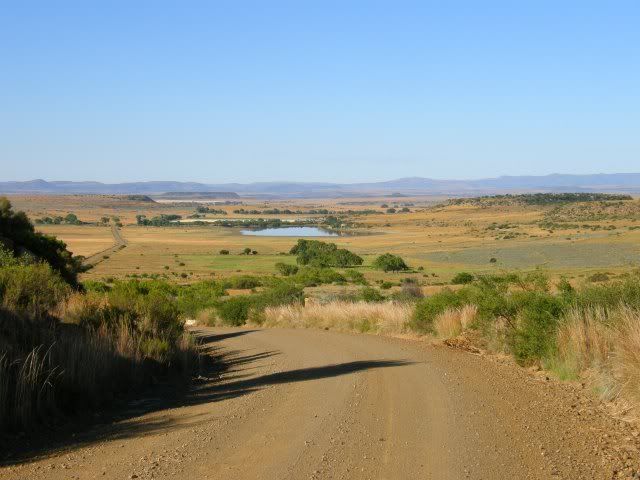
Lovely roads these - gravel highways that's an absolute pleasure to ride.
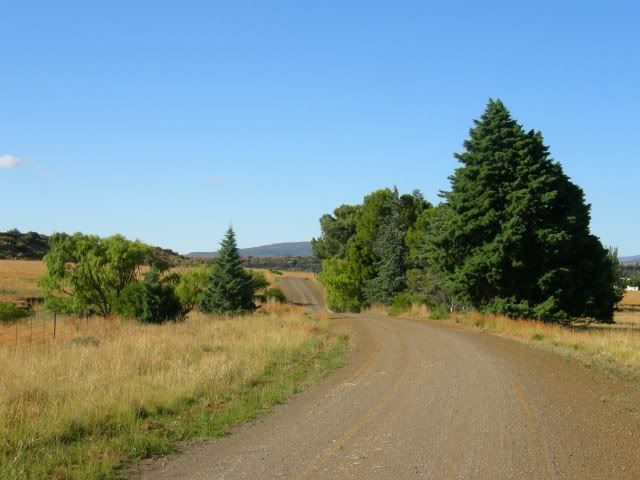
Smidty crossing a single lane bridge.
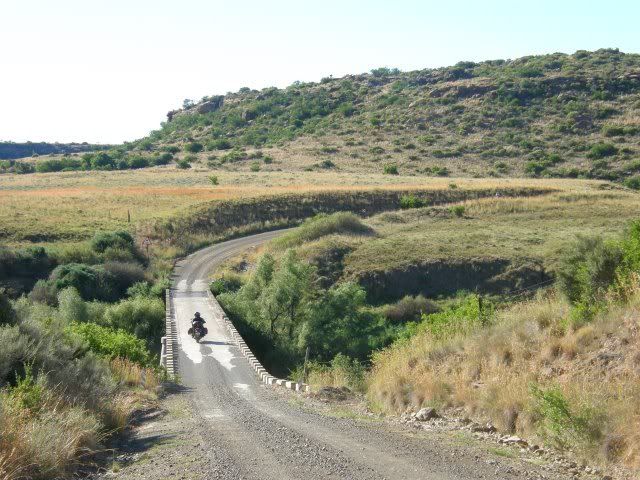
And the view from the bridge:
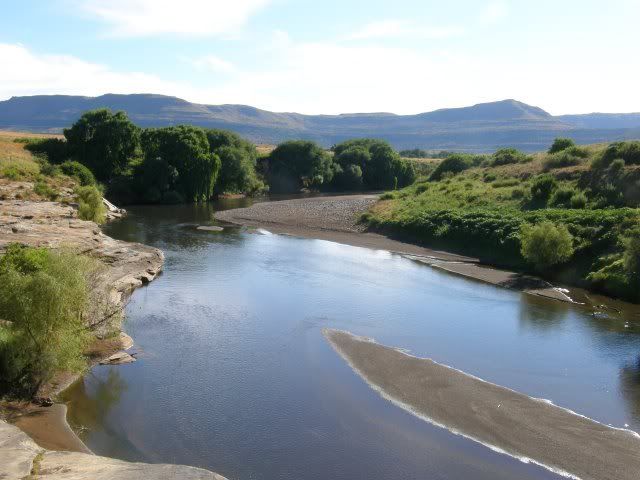
This is the Kraai river - the same river we spent time at yesterday in the Maloti!
We are on our way to the Penhoek Pass via Jamestown. All these little towns have beautiful churches.
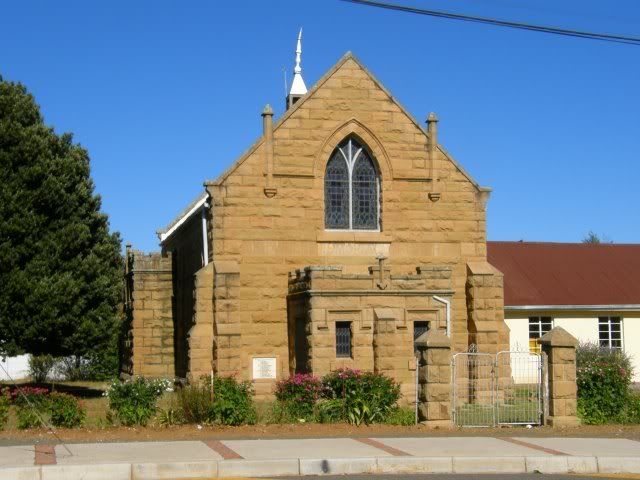
The group is still in very high spirits and we joke and laugh where-ever we stop. The sons ate a lot of peanuts and three bean salad on this trip which in itself was a source of lots of laughter
 so when I saw this we just had to take a picture.
so when I saw this we just had to take a picture.  To Afrikaans people the joke will be self explanatory.
To Afrikaans people the joke will be self explanatory. 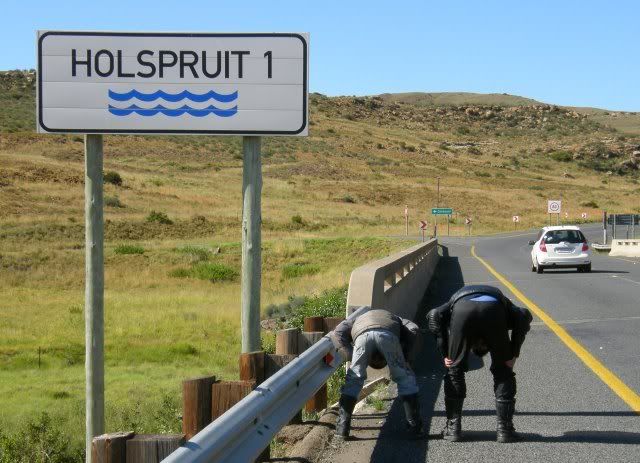
Penhoek Pass. The name dates from the days of the ox wagon. The original road followed a kloof or narrow glen in the mountain, the top part crossing a broad rocky face several metres below the last ridge. The rock was so slippery and the gradient so steep that the oxen were unable to pull the wagon up. A peg was therefore fixed in the rock ledge, and as soon as the oxen in front reached it, the whole team was outspanned and a long chain was fastened to the wagon shaft. The chain was twisted once around the peg and then hooked again to the team, which was now facing downhill. In this way the oxen found it easy to pull the wagon uphill while they were straining downhill. And once this steepest and most difficult section was passed, the last stage was easily covered. When the present road was built in 1952, the rock face was unfortunately blasted away and the peck disappeared.
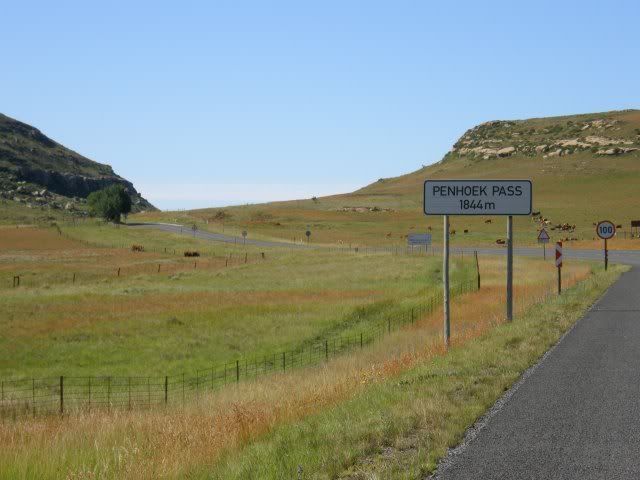
At the bottom of Penhoek pass we opt for a gravel shortcut towards Boesmanshoek Pass.
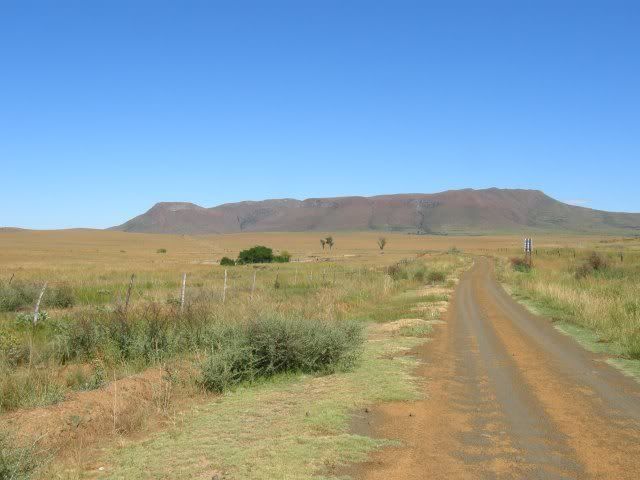
But first a quick stop in Sterkstroom:
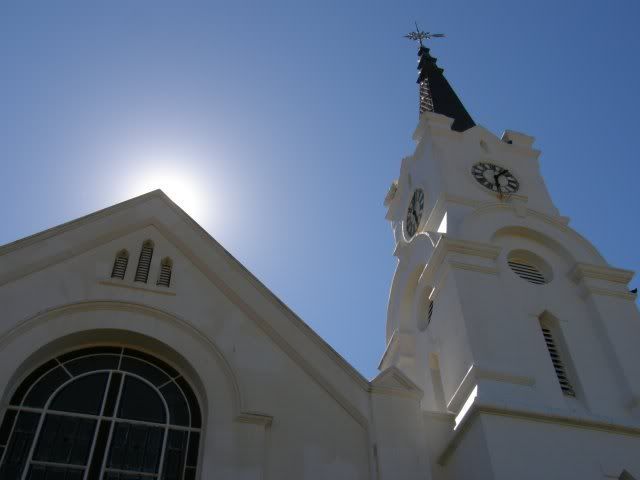
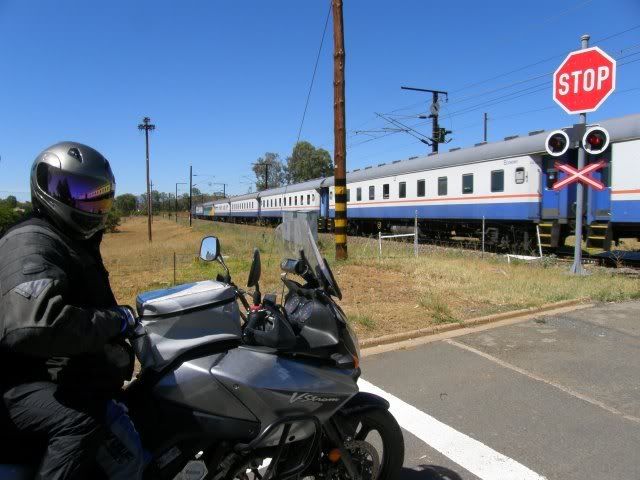
Boesmanshoek Pass. This is one of the highest tar passes in the country and it regularly gets closed in the winter due to snow. At this altitude we could feel that the bikes had a little less grunt.

Molteno:

Our next point of interest was the Battlefield of Stormberg. The battle of Stormberg was one of three British defeats early in the Boer War that together became known as "Black Week".
Black Week saw the British in South Africa suffer three serious defeats in six days. The first came at Stormberg (10 December 1899), where an army under Sir William Gatacre suffered a defeat after a badly handled night march. Next came Magersfontein (11 December 1899). This saw the defeat of an expedition under Lord Methuen that had been attempting to relieve Kimberley. Finally, on 15 December 1899 the commander in chief in South Africa, Sir Redvers Buller, led his army to defeat at Colenso, ending his first attempt to relieve the siege of Ladysmith.
This was the worst run of defeats suffered by the British army since the Napoleonic wars. I was at the Magersfontein site on my Love & War trip, so I had special interest in this site. Hopefully I'll be able to visit the battlefield at Colenso also in a future trip.
The GPS guided us to the battlefield, or so we thought. We soon realized we were riding on private land and ended up at a farmstead.
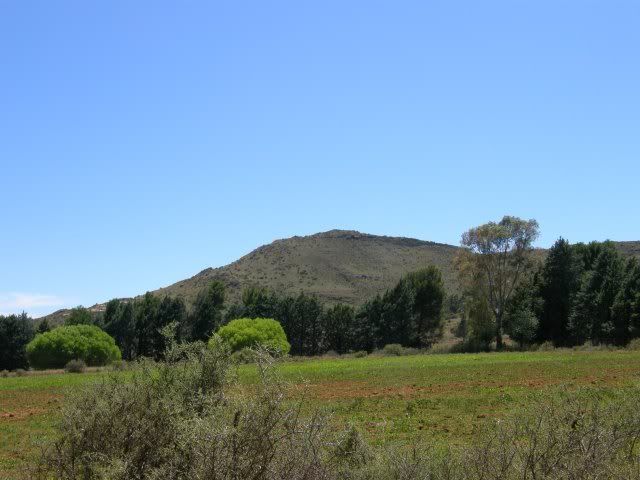
As dawn broke, the British (after a long night march) at last came in sight of the Kissieberg. A small Boer picket with one 75mm Krupp gun opened fire. Although Gatacre's force had merely to march around the hill to force the Boers to retreat, about half the infantry rushed forward without orders to storm it. They found that the hill was a typical kopje, ringed by a vertical rock face, which they were unable to climb. The British guns came into action, but shelled the British infantry already downrange.
The other half of Gatacre's force began to fall back in disorder. Gatacre gave the order to retreat to Molteno. Mounted Boer reinforcements appeared and attacked from both sides. The retreat of the exhausted British infantry was covered by the mounted infantry and the artillery, although two 15-pdr. guns were lost. Not until they reached Molteno did Gatacre realise that over 600 men had been left behind on the Kissieberg. Hopelessly cut off, they were forced to surrender.
In the three humiliating defeats the British Army suffered by the Boer Republics at the battles of Stormberg, Magersfontein and Colenso they had 2,776 men killed, wounded and captured. The Boers suffered during the same period some 286 killed, wounded and captured.
The day was heating up, so we stopped for some refreshment.

Lovely spot under the trees next to a dam.

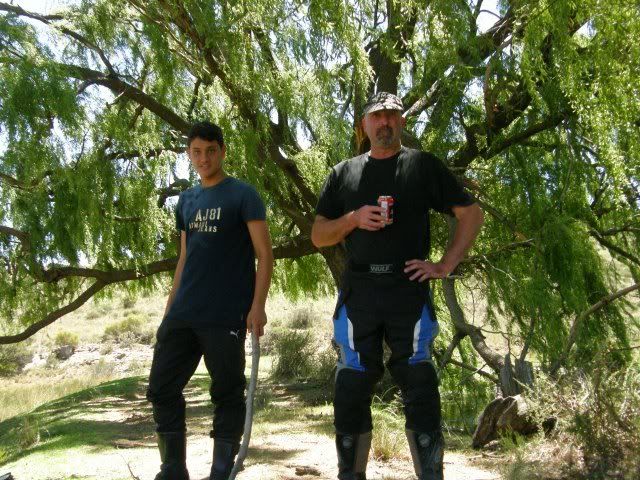
I saw another entry for "Stormberg" on the GPS and Asterix and I decided to go investigate. This is what we found:
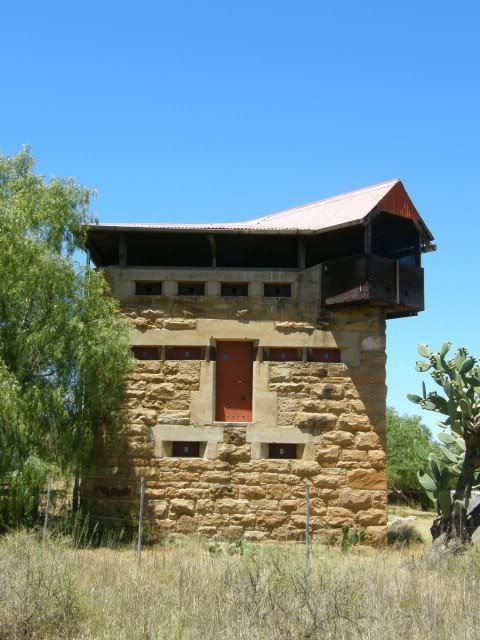
Apparently the British had already retreated from this fort before the battle of Stormberg happened.
Time was not on our side and we had to hit the road. Steynburg:

This town has several beautiful churches.
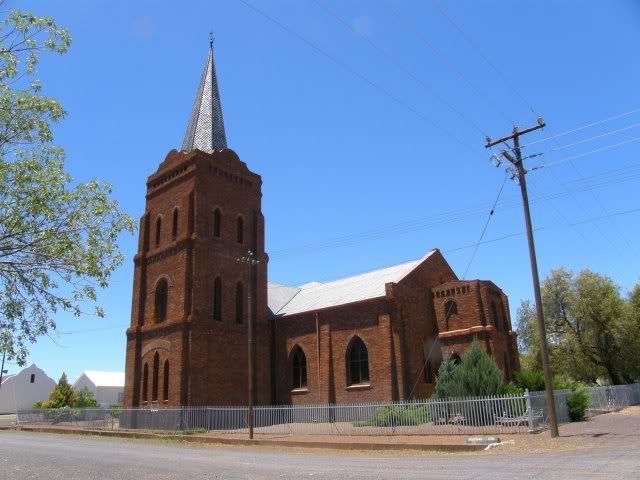
Two more passes between Middelburg and Graaf Reinet:
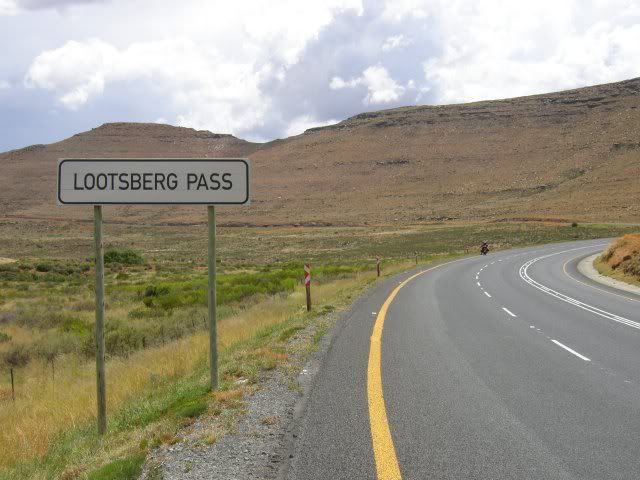
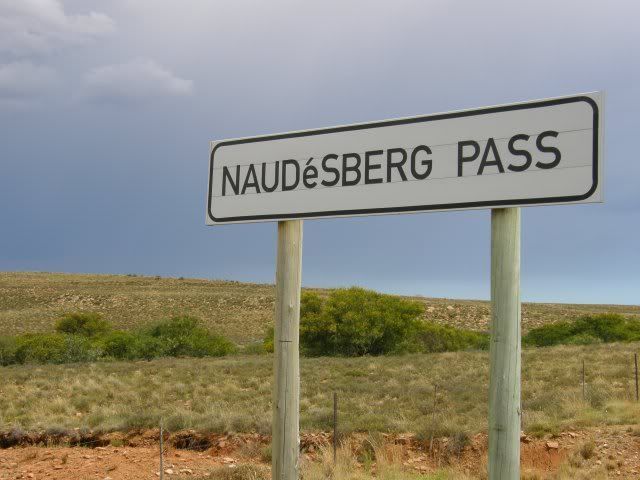
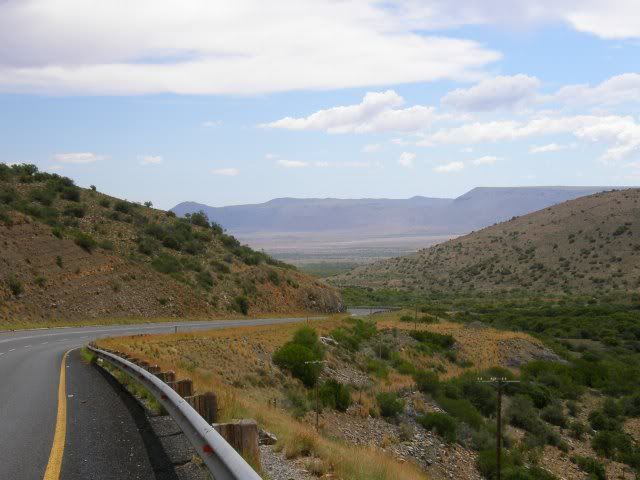
And Graaf Reinet probably has the most beautiful church of all!
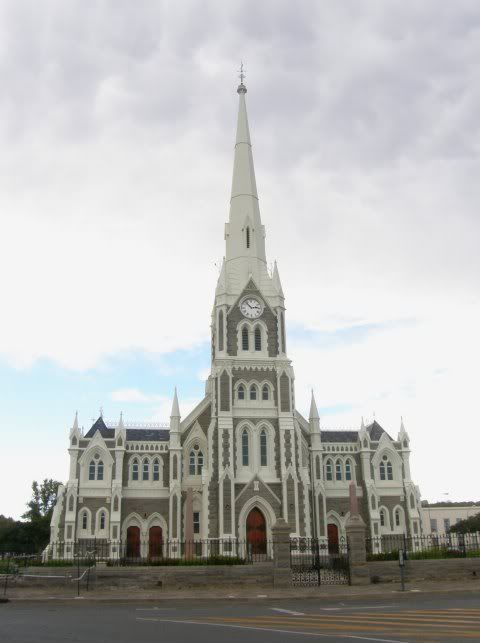
It was only three in the afternoon and we were here already, so we decided to push through to Willowmore (I have family there). That way we'd only have a short hop to George on the last day.

On our ride today Smidty suggested that we stop every half hour to stretch our legs and it worked a charm! We just did not get as tired as the previous days. At one of the stops Smidty Jnr asks: "What's that blue stuff all over your engine?" What??
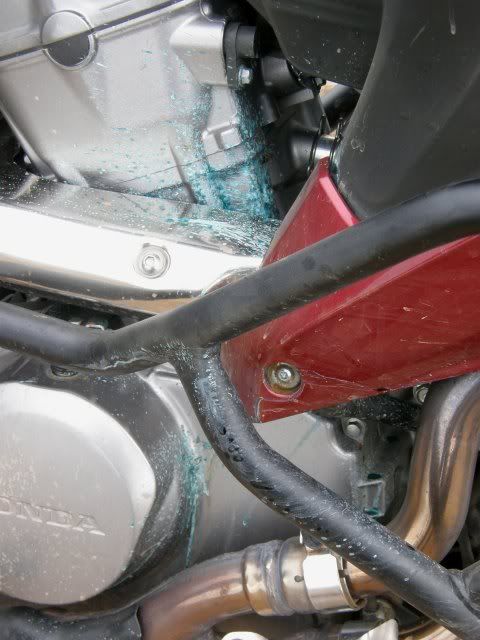
Seems like my radiator is leaking
I filled the reservoir and we set off. I stopped often to check it but the water level only dropped very very slowly. At least I now had photographic evidence that that Honda's indeed does have blue blood
 Also, now I too have a story to tell! Around camp fires I have heard owners of other brands tell stories about blown engines, popped shocks, snapping axles and such, all the while accusing me of having a "boring" bike because nothing ever breaks. But now I too have a story
Also, now I too have a story to tell! Around camp fires I have heard owners of other brands tell stories about blown engines, popped shocks, snapping axles and such, all the while accusing me of having a "boring" bike because nothing ever breaks. But now I too have a story 
The Beervlei Dam near Willowmore: Not a drop of water!
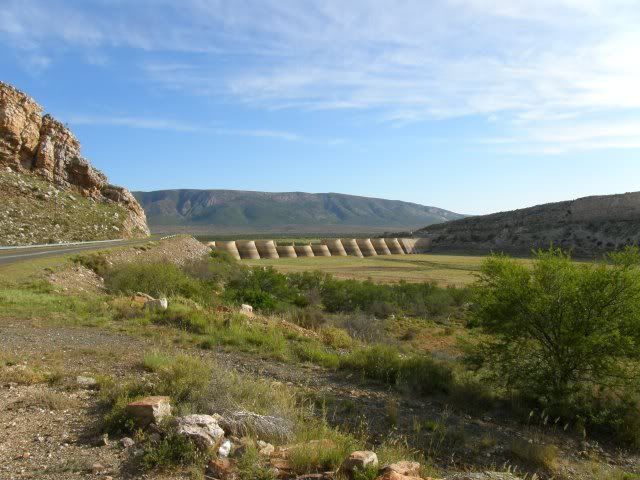
Arriving in Willowmore the radiator reservoir had not even dropped to the half way mark.
And just look at our lodgings tonight.

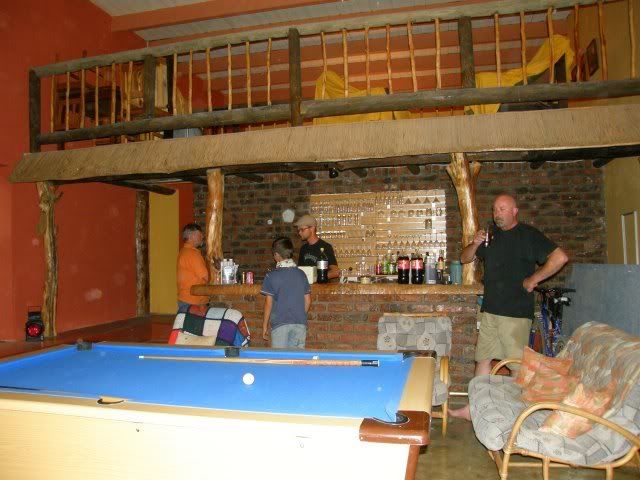
Asterix and Smidty Jnr in the splash pool while we braai (BBQ):
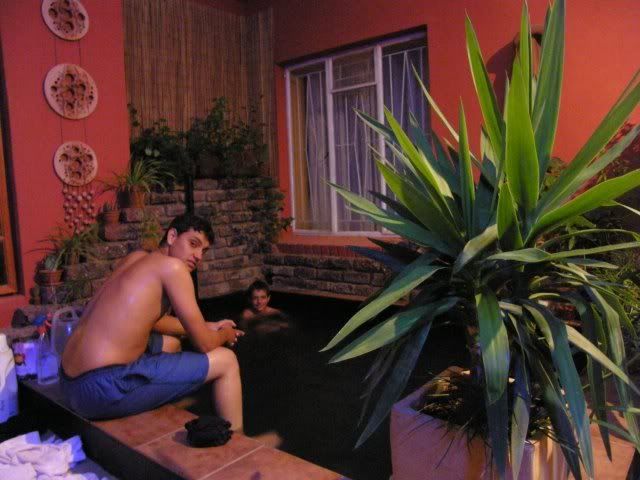
This was another good day. We enjoyed the ride and the company and the regular stops worked a treat! We rode 622km today without getting as tired as previous days.
Tomorrow we head home.


Sources: Romance of the Cape Mountain Passes; Wikipedia; History of War
.
2 comments:
Freedom is just another word for motorcycles
As usual marvellous story
Great website
Thanks john!
Post a Comment